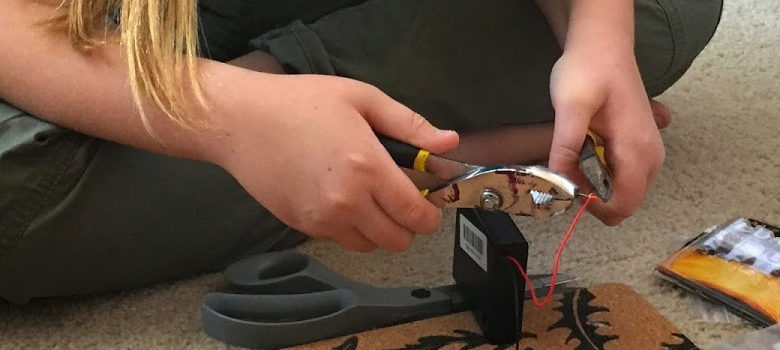
What began as a daughter’s casual comment to her mother on a cold winter day could soon yield two happy outcomes: providing pain relief to post-mastectomy patients, and a possible prize in the Google Science Fair.
Last December, as India Glennon, age 13, and her mother, IEEE Member Carol Glennon, fought bitter temperatures while out shopping near their San Francisco-area town, Glennon uncharacteristically complained of the intense pain that the cold had triggered in her chest wall. Since undergoing a bilateral mastectomy in 2008, and several more operations since then, she has endured the torturous condition. It is typical following this type of surgery, and cold temperatures greatly magnify the pain. Like other post-mastectomy patients, Glennon uses a heating pad or hot water bottle at home to obtain soothing warmth-but when on the go, it’s impractical.
“I knew she had to be in a lot of pain, because my mom almost never complains,” says India. “Then the idea just came to me, and I asked her, “Why can’t you put heaters in your jacket?'”
A solution was born-and in just the right family, because both mother and daughter are admitted electronic tinkerers. “It’s in my genes,” says Carol Glennon. “My aunt was an expert seamstress, and I learned from her that if I wanted something, I could make it.”
Together, India and her mother had already built such do-it-yourself devices as light-up Legos®; and various software programs to help keep the family of five organized, provide mobile alerts, and even turn on the lights when entering the house. Glennon, who is operations manager for Walmart Global eCommerce in Silicon Valley, explains that in her free time she “just likes to build things.” It is clear that her oldest daughter–there also are two more children, ages 9 and 8-has inherited her DNA for tinkering.
This past spring, when the entry period opened for the 2015 Google Science Fair, a global online science and technology competition for students ages 13-18, India Glennon knew exactly what she wanted to create. Working with her mother, she designed schematics for a safe, low-voltage and inexpensive heat source to be worn inside a jacket. After testing several possibilities, India selected 5- by 6-inch warming pads from Adafruit Industries, a popular DIY electronics Web site. The pads are secured inside the jacket with industrial-strength Velcro®, and are connected by wires to a small battery pack placed in an inside pocket. The battery pack has four AA batteries that power a low, comforting heat of about 80 degrees Fahrenheit. The patient can easily and inconspicuously operate the device using the on/off switch on the battery pack.
Fittingly, India Glennon named her invention Care Coat.
 |
Almost any jacket with at least one inside pocket can be used as a Care Coat; jackets without any inside pocket or lining can be easily adapted, by adding a small inside pocket for the battery pack. With a pragmatism usually missing among 13-year-olds, India made certain that all the components can be easily removed, so the garment can be washed, or dry cleaned.
Carol Glennon was her daughter’s test subject, and after donning the Care Coat she was soon delighted to feel less pain. “Without the coat,” says India, “Mom’s pain level, on a scale of one to 10, was about seven. But wearing it, her pain was two to three points less.”
Now, India is waiting impatiently for 7 July, when the 20 regional finalists in this year’s Google Science Fair will be announced. If she is one of them, she and her mother will be invited to Google headquarters in Mountain View, California, so she can present her invention to the panel of judges. On 4 August, the global finalists in the 2015 competition will be announced. The top prize is a $50,000 college scholarship”good for India and her family, if she wins-as India has set her sights on attending Stanford University.
This fall, India will be in 8th grade, and she says she loves every subject, but especially science. Her hero is Ada Lovelace, the first woman computer programmer-so it’s no surprise that the girl is an avid coder. She is “super-involved” with the local Girl Coding community, sponsored by Google. Currently, India’s learning the finer points of Swift, a new Apple programming language. She also attends Stanford Science Circle, a pre-collegiate program that meets one evening a week on the university campus. Stanford faculty, researchers and post-doctorate fellows lead talks and activities for the program.
No matter what happens on 7 July, the teen inventor believes the Care Coat can help many post-mastectomy patients. “Because of Care Coat, I can make a difference for the people around me,” she says. “My mom and Care Coat inspired me to think of others, and how I can make a difference. Helping people is important to me, and I want to use science and engineering to make people feel better.”
Helen Horwitz is an award-winning freelance writer who lives in Albuquerque, N.M. She was with IEEE from 1991 through 2011, the first nine as Staff Director, IEEE Corporate Communications.






